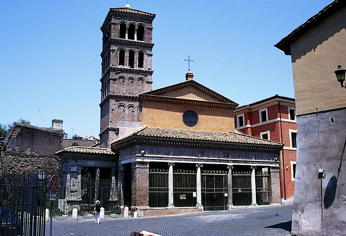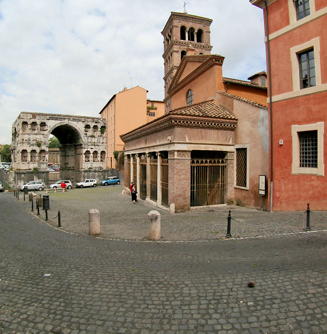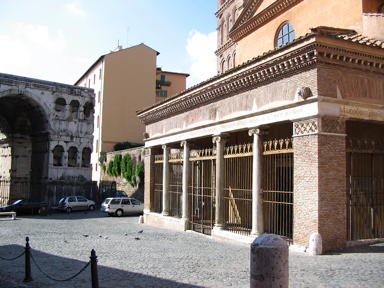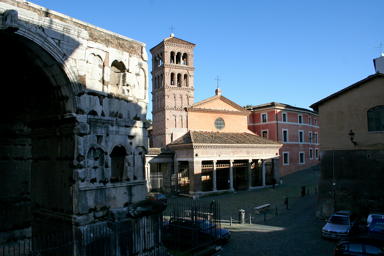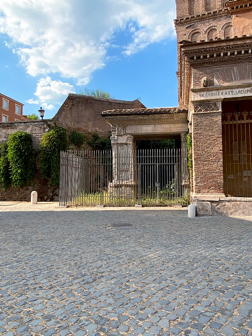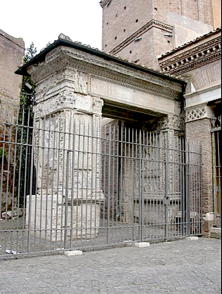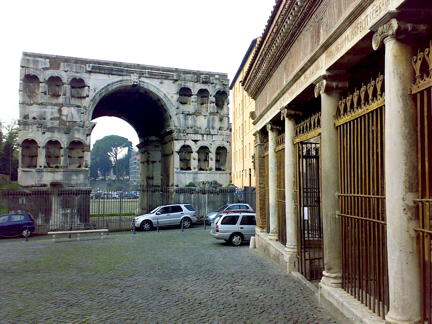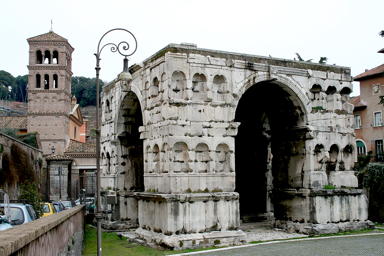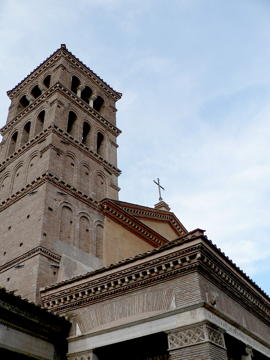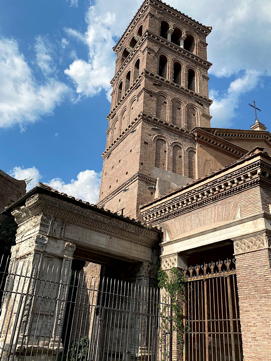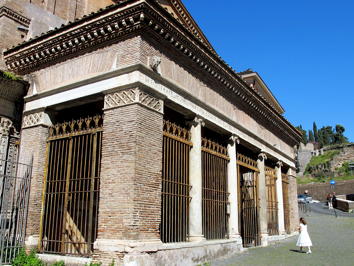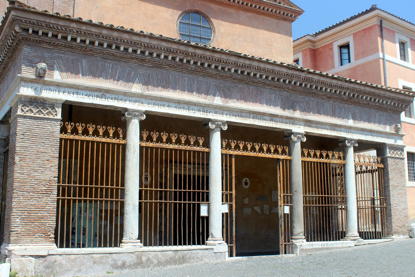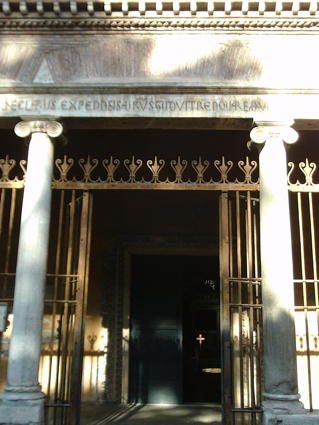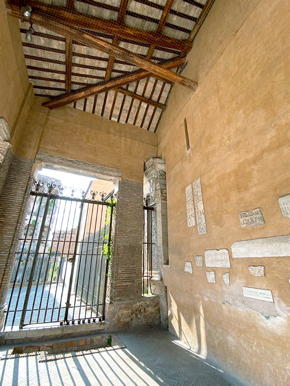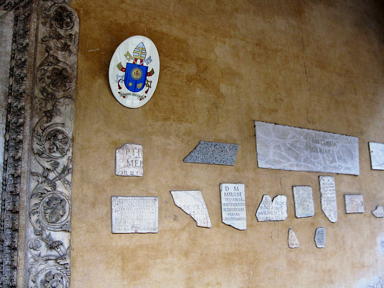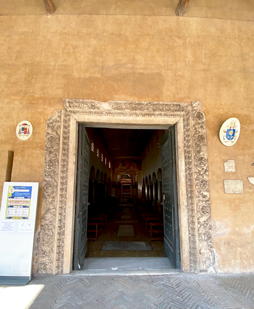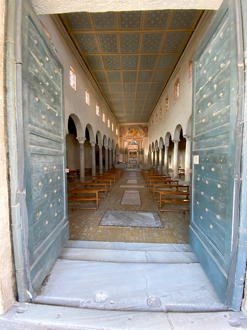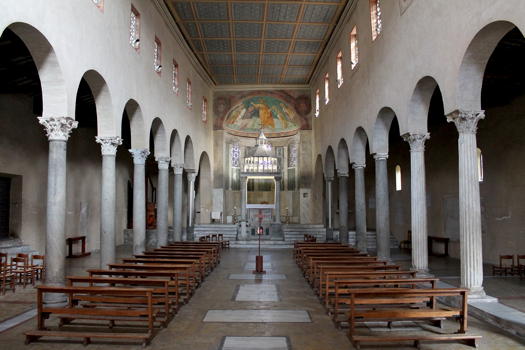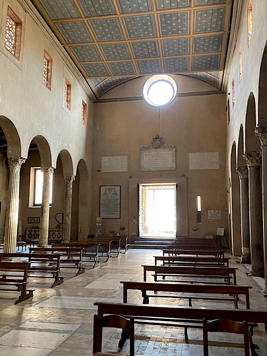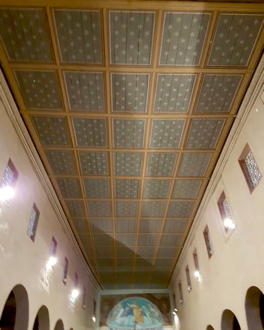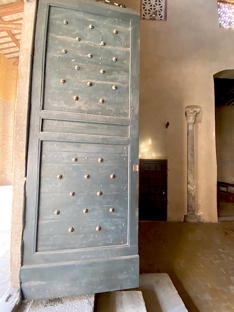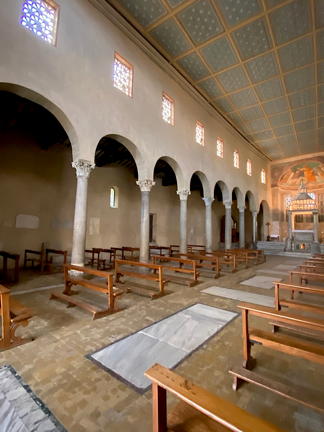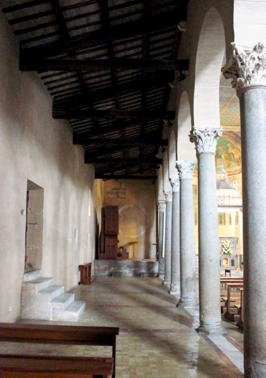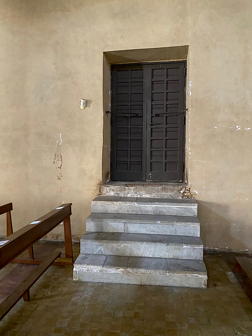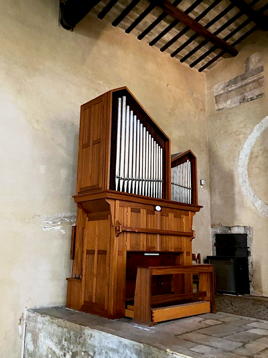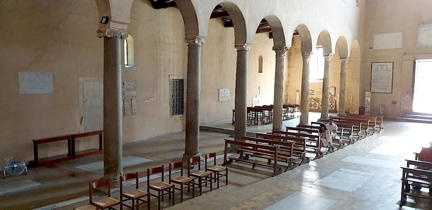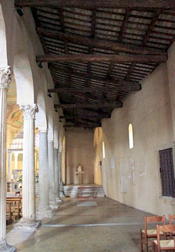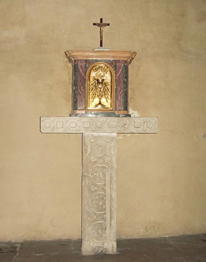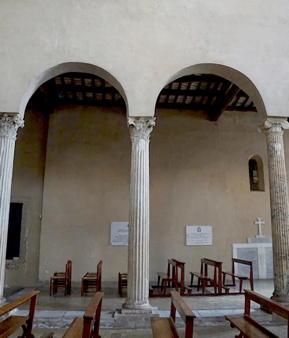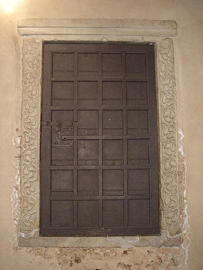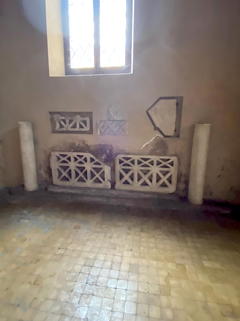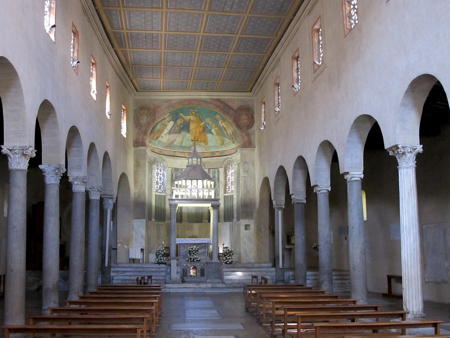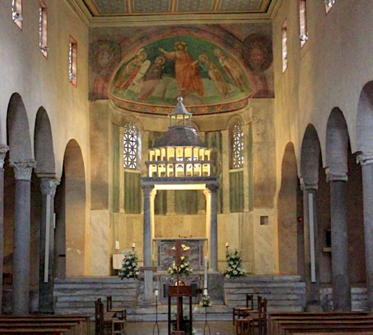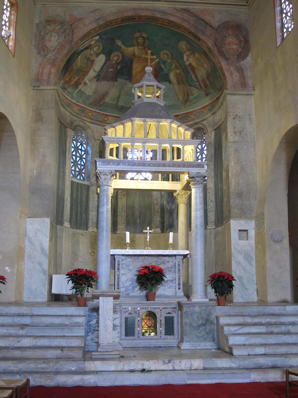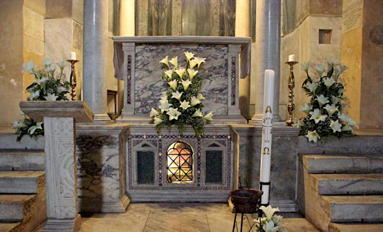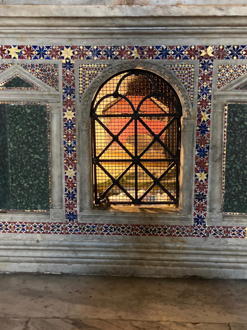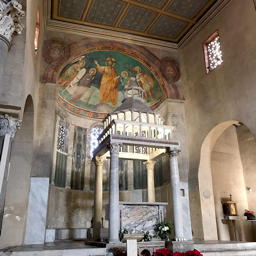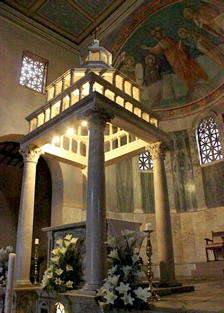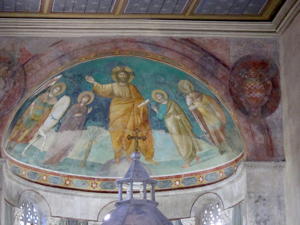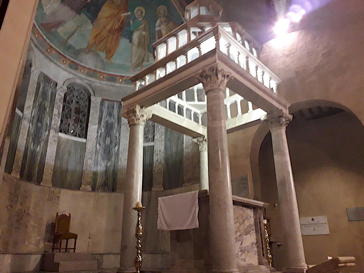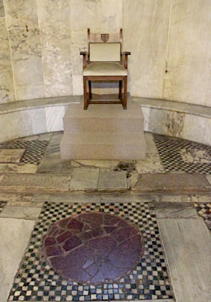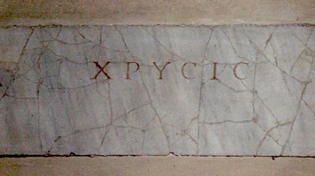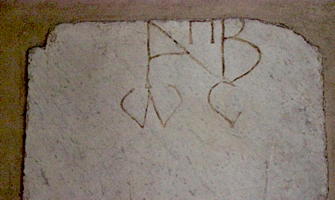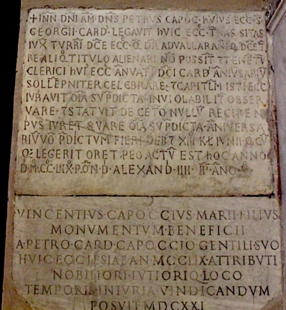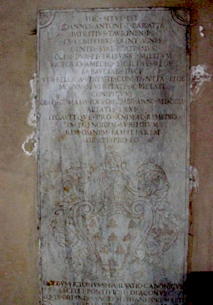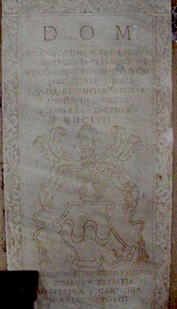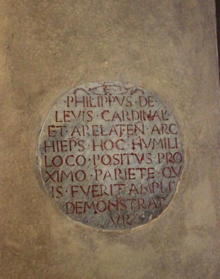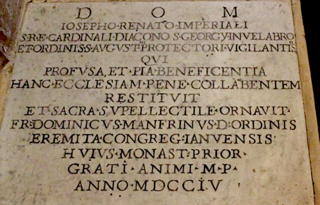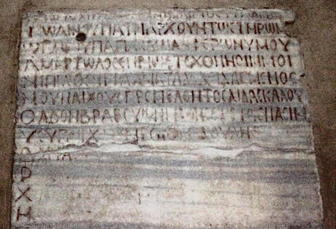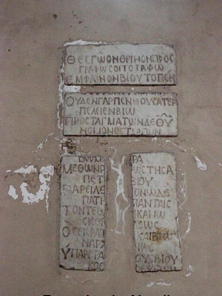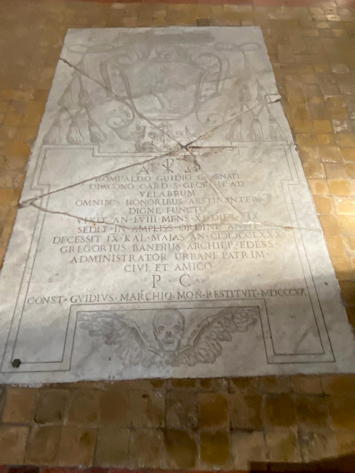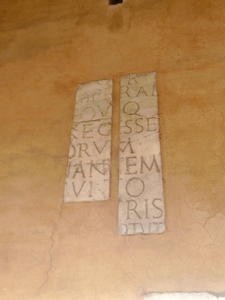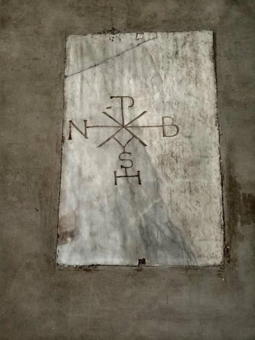San Giorgio in Velabro is a heavily restored 9th century titular and convent church in the rione Ripa. The dedication is to St George, the 'Great Martyr'in the East, and located on the ancient Roman Velabrum, near the Arch of Janus.
The ancient Arcus Argentariorum is incorporated into the church's front façade. Velabro refers to the area of Rome in which this church was built.
For reference, a plan of the church is available
here.
The church was built in an area inhabited by the Greeks. The first church was built in the 7th century on the preexisting structure. In 741, Pope Zacharias I, who was of Greek origin, ordered relics of St George, (his head, spear and part of his battle-standard) to be ceremonially transferred from the Lateran to this church. The church was completely rebuilt by Pope Gregory IV between 831 and 833.
In the 12th century the campanile was built, and the present high altar with its baldacchino was provided. In the 13th century the façade was modified by opening the rose window and creating the portico. he portico was substantially restored on the orders of Pope Clement IX by 1669. The iron railings date from this time.
The Napoleonic occupation of Rome at the end of the 18th century left the church derelict. The church, devastated and plundered of its furnishings, was used as a warehouse for oil and wine. The first, important restoration intervention was carried out in the early 1810s under the direction of Filippo Nicoletti and concerned both the exterior (including the bell tower) and the interior. The church was restored again between 1820 and 1824, and the new façade designed by Giovanni Azzurri.
Until the 20th century, the apse fresco was obscured. However, in 1910 the Italian government undertook a restoration of it which left it in its present state. The church was restored by Antonio Muñoz in 1926. The floor was lowered to its pre-17th century level, and funerary monuments and side altars were removed. In 1939, the church and attached college was given into the care of the Order of the Holy Cross.
On 27 July 1993, the portico was destroyed by a car bomb, which also blew a hole in the nave frontage behind it and seriously damaged the Generalate. This was part of a Mafia bombing campaign aimed at forcing the Italian government to rescind certain laws passed to suppress organized crime. The perpetrators of this outrage have been caught and convicted. The Italian government had the portico was restored by 1997, although some damage was left unrepaired as a memorial.
